This weapon was Colt’s entry into the US Army’s Advanced Combat Rifle trials in the 1980s, a program looking for a successor to the M16A2 as the standard US service rifle.
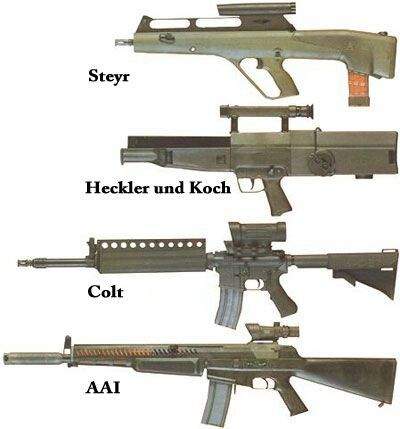
While other companies entered radical designs, Colt stayed very conservative. They entered a rifle that was at the core still an AR-15 in operation, with no notable changes to the internal operation. Externally, the M16A2’s fixed stock was replaced by a collapsible one, the fixed carry handle was replaced by a picatinny rail, and the A2 flash hider was replaced by a more elaborate muzzle brake-flash hider with a series of small holes designed to better handle flash and muzzle rise.
However the most striking aspect of the design is the large ribbed handguard featuring a series of speed holes. The handguard is raised because at the top there is a white rib running down the length.
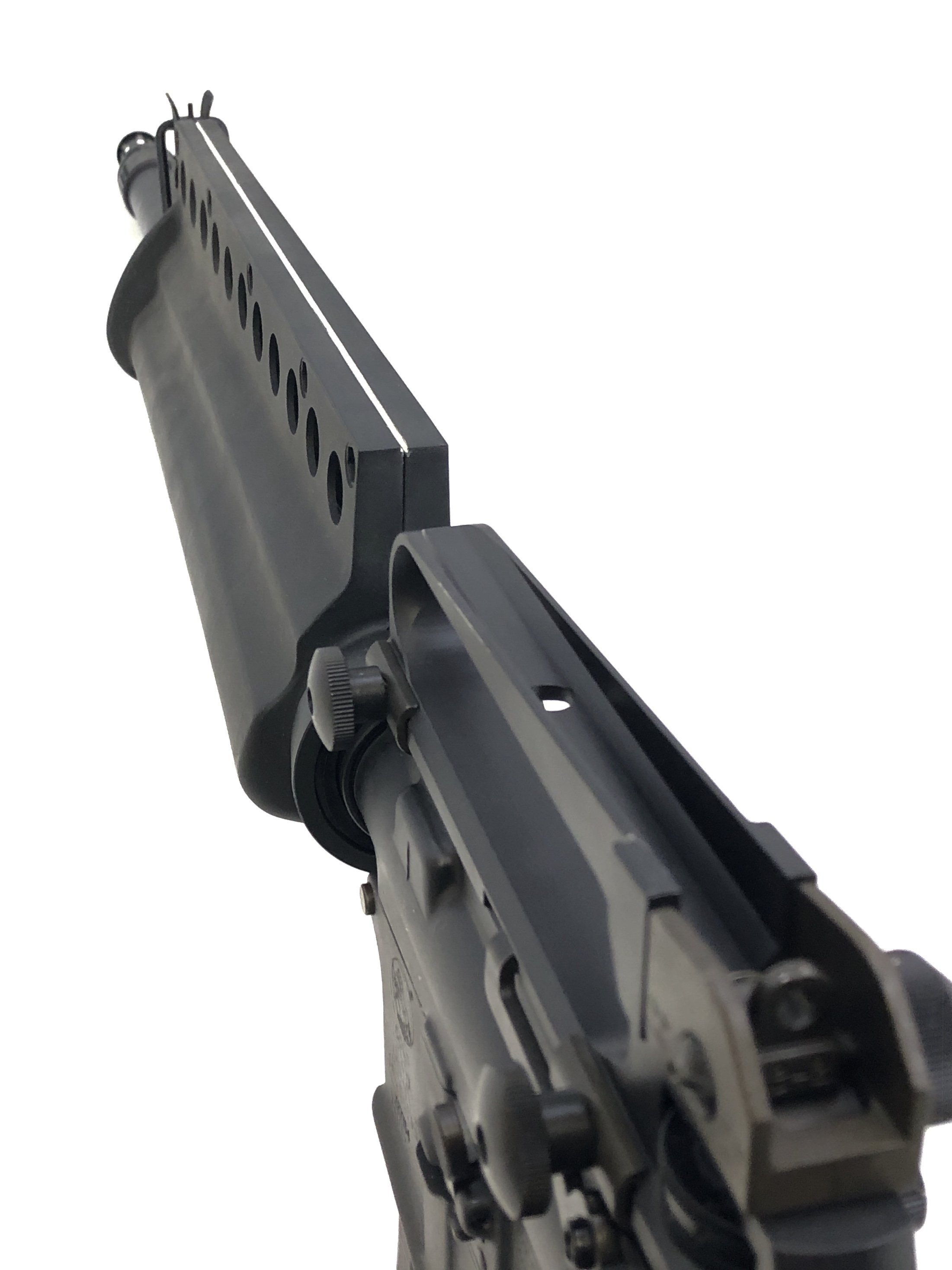
This rib was meant to serve as a quick acquisition sight for fast snap shooting, being easier and faster for soldiers to pick up on than trying to aim down traditional iron sights in combat conditions. In an age before red dots were standard issue, this feature does actually make some sense. The rifle was submitted with a detachable rear iron sight that would still be used for more deliberate shots.
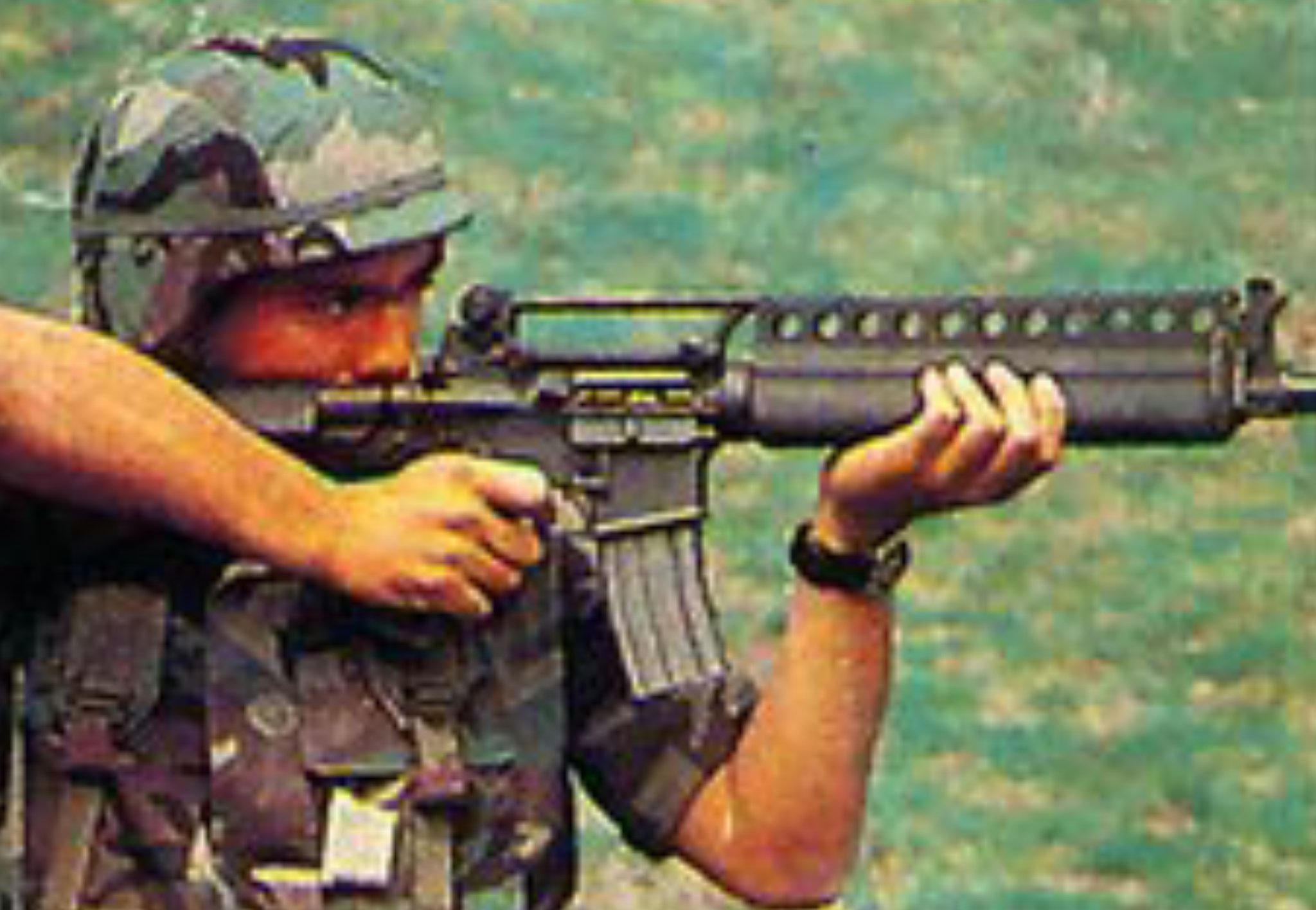
At least some of the Colt ACRs had a flip up rear sight attached to them, though this feature does not consistently appear on all of the rifles.

The rifle was also submitted with an optic made by Elcan. The optic was made in cooperation with Colt for the purpose of the ACR entry, although when program was canceled, Elcan would go on to use that developed design as the template for their successful C79 optic.
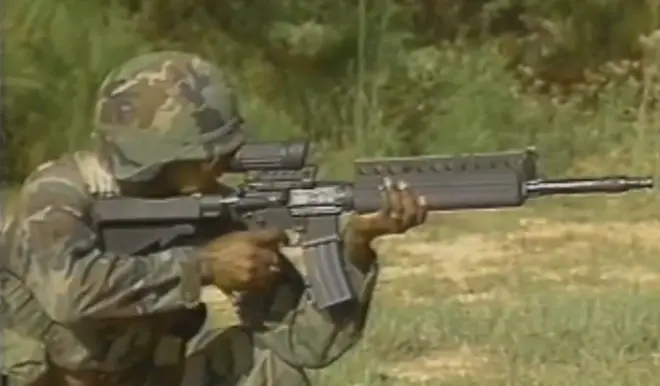
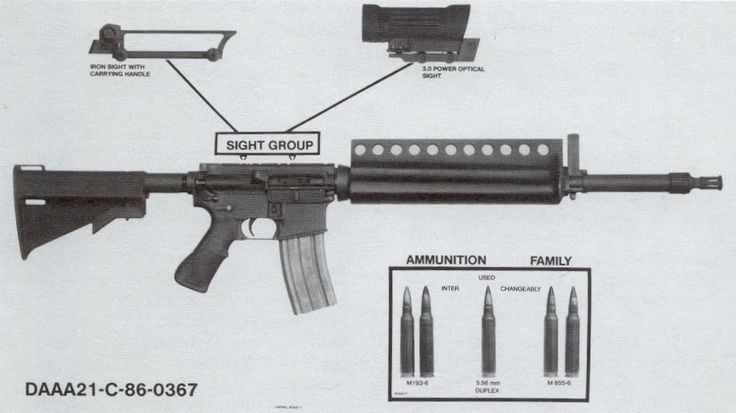
The most unusual part of the Colt ACR was not the rifle itself, but the concept for the ammunition. The US Army was always looking for ways to improve hit probability in firefights. Everything from flechettes to hyperburst fire was submitted by other entries. Colt decided to go the double bullet route. The profile of a 5.56x45mm round, but loaded with two projectiles. The second being nestled inside the first. An instant doubling of hit probability (in theory), and it still retained the option to use standard old fashioned 1-projectile-per-cartridge humdrum ammunition.
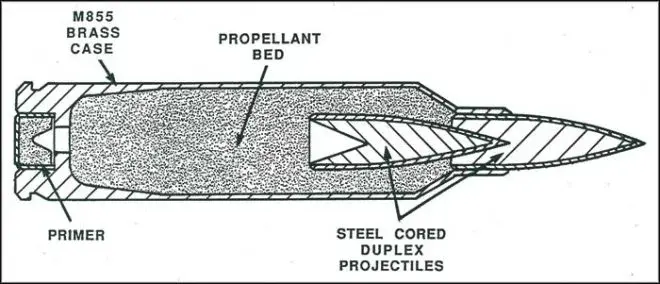
In 1990 the Army’s Advanced Combat Rifle program ended. Although all the entered rifles showed promise, none had shown a significant enough jump in capability for the Army to decide to switch away from the M16A2.

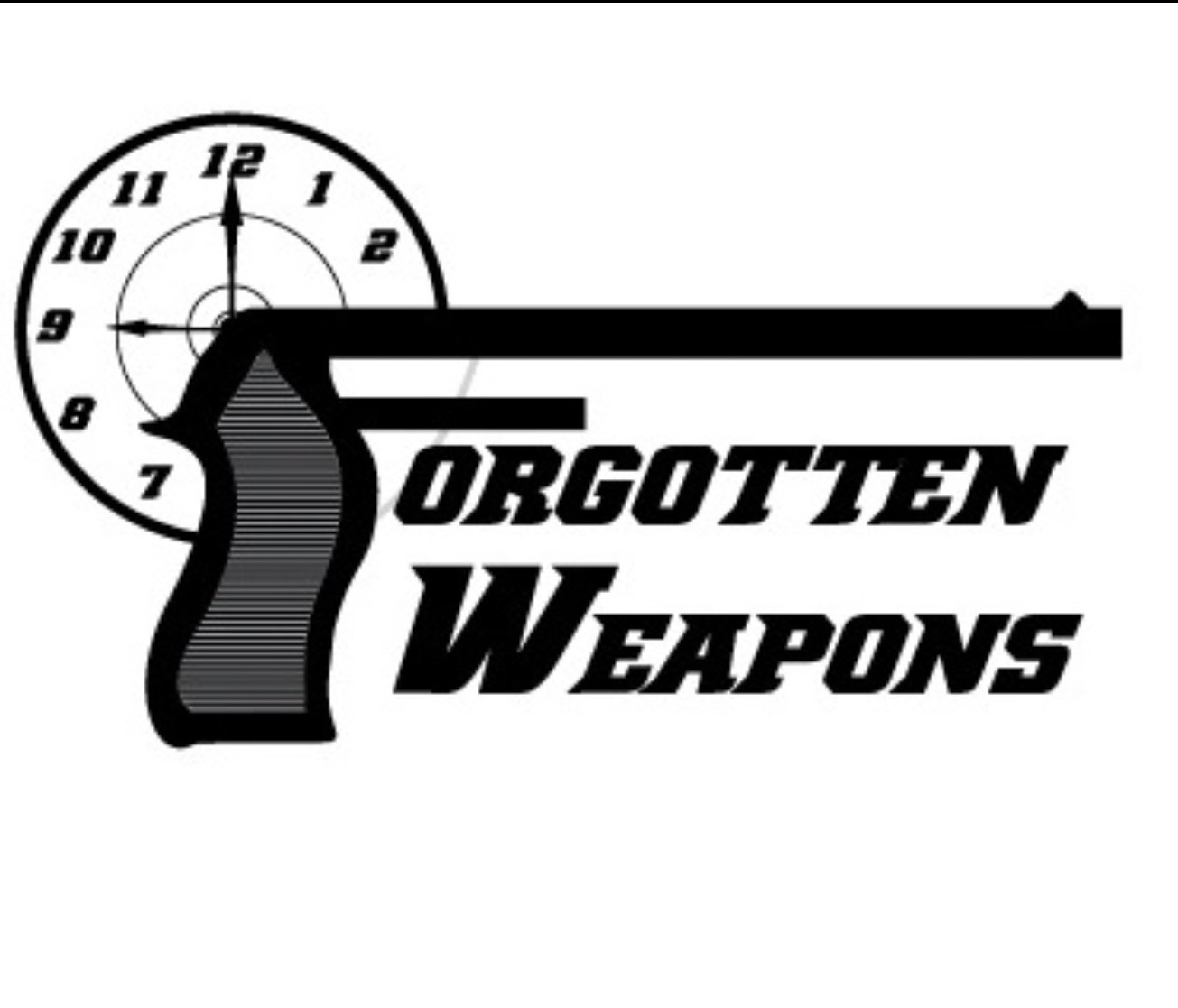
Why does every gun look like a pistol with extra stuff all around it?
I’m not a gun expert, but I presume it’s because pistols are mostly reciever, which is the core part of guns that houses the trigger and firing mechanism. It has a pretty similar shape among a lot of firearms. Someone more knowledgeable could correct me if I’m wrong.
The shape of a pistol is defined by the blue line the barrel is on and the green line where you hold it. It’s a very simple silhouette. Guns need somewhere to hold them and to have a barrel so you can see that basic L shape in most designs.
Because these “assault rifle” style guns all have pistol grips.